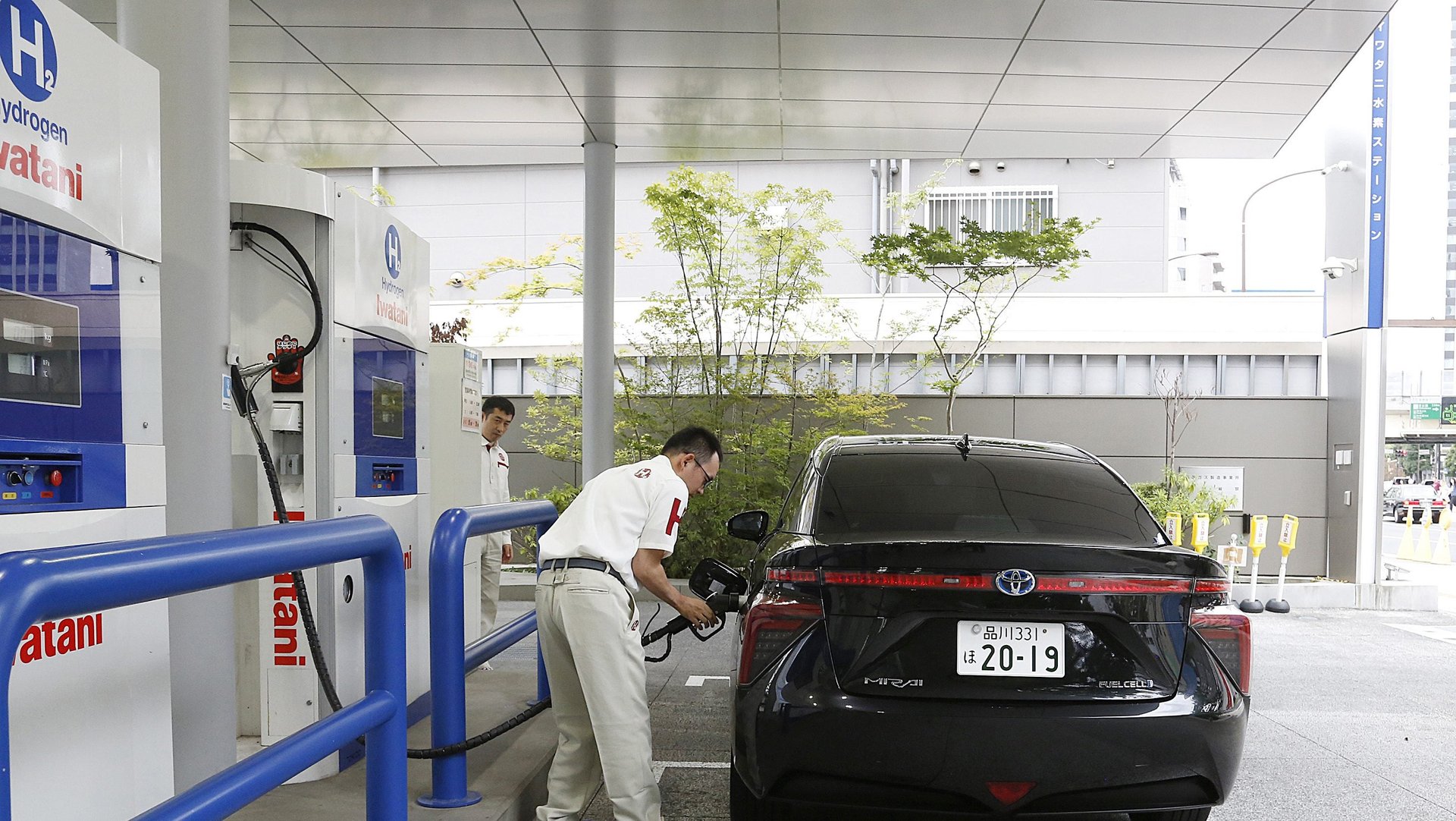A hydrogen fueling station fire in Norway has left fuel-cell cars nowhere to charge
Update, June 15: The article has been updated from a statement from Nel Hydrogen.


Update, June 15: The article has been updated from a statement from Nel Hydrogen.
A hydrogen fueling station explosion earlier this week in Norway, one the world’s most electrified countries in transport is worrying.
On Monday, a hydrogen refueling station located in Bærum, a suburb of Norway’s capital Oslo exploded around 5:40 pm local time. The fire was contained within three hours, said Nel Hydrogen, a hydrogen supplier which formed the joint venture Uno-X to operate the station. Two people were sent to the hospital after the explosion due to an airbag triggered in a car nearby under the explosion pressure, local media Tu reported (link in Norwegian).
Founded in 1927, Nel operates one of the largest hydrogen fueling businesses in Norway. It has 50 fueling stations in nine countries. After the explosion, the company has shut down 10 more stations, which are located in multiple countries including Denmark and Norway, local news E24 reported (link in Norwegian). Quartz has reached out to the company for investigation process and will update the piece when hearing back.
In an email statement to Quartz, Nel’s chief executive officer Jon Andre Løkke said that no unit exploded at the site. The company’s initial investigation showed that hydrogen gas that had leaked caught fire in the open air. And that created a pressure wave.
Japanese carmaker Toyota and South Korea brand Hyundai have also both halted sales of Fuel-cell vehicles (FCVs) in Norway after the incident.
The explosion has left fuel-cell vehicle (FCV) owners few options to charge as Uno-X, is the leading supplier in the country. And the situation has a broader global implication. A chemical explosion last week in California’s Santa Clara has also put local drivers in a similar situation where they face a hydrogen shortage after the explosion.
These incidents come at a time the world is increasingly talking about moving to fuel-cell cars as they provide solutions to range anxiety, a core problem for battery electric car owners today. FCVs have long distance range and require a short time to refuel. Plus, FCVs are zero-emission. The trouble is there aren’t enough hydrogen stations, which discourages car buyers from choosing FCVs but this often means companies don’t want to build hydrogen stations in the first place. And questions of transporting and storing hydrogen remain the top priority—hydrogen has lower ignition energy than natural gas or gasoline.
As the world pushes forward with FCVs its problems will need to be addressed. China, the world’s largest auto market, is going full force at FCVs now. Wan Gang, China’s former science and technology minister has been vocal about using FCVs in public transport and ride-sharing. And China is taking notes on FCV developments from Wan, the architect behind China’s battery-powered market, now taking half of the world’s total sales of electric cars. In the US, California takes up half of the 11,000 FCVs on the road. Toyota’s selling its flagship fuel cell passenger car Mirai to eleven countries including the US, Japan, and nine countries in Europe.
Looking for more in-depth coverage? Sign up to become a member and read more in-depth coverage of China’s electric-car boom in our field guide.